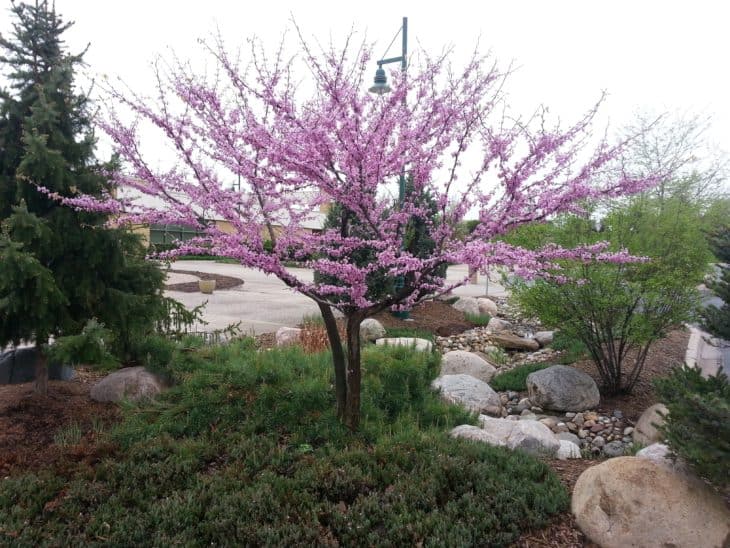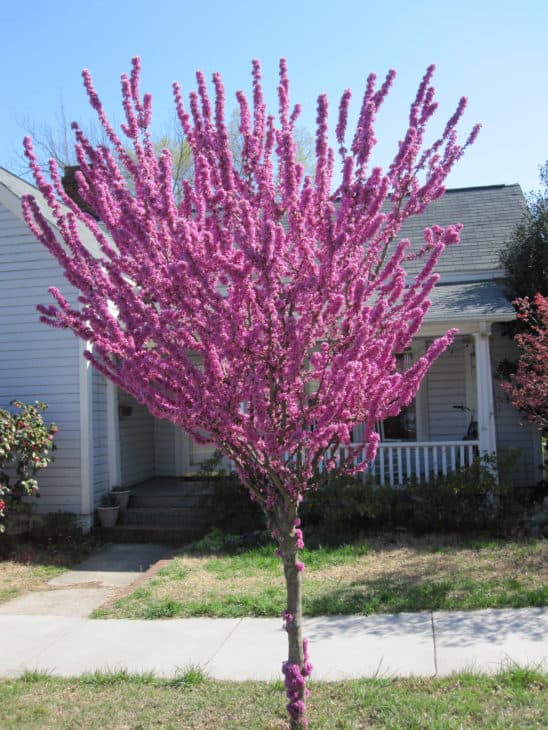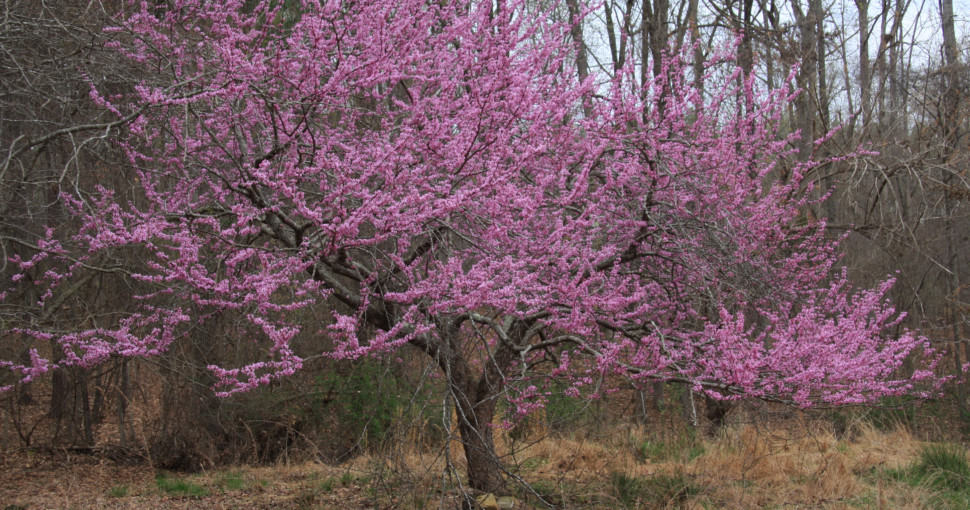Redbud trees are beautiful and whimsical trees that look like something from a fairy-tale. These trees are extremely popular, especially in the Southern United States, but are why are they so popular, and do these trees have any drawbacks? Let’s find out!
Redbud trees have some pros and cons. Some of these are that the tree is a low-maintenance tree, it is drought tolerant, and it’s beautiful, but this tree is susceptible to certain pests and diseases, they have a short life span, and they require a lot of water when they are young, to name a few.
Pros Of Redbud Trees
Redbud trees are whimsical trees popular in many gardens today for many different reasons. Let’s take a look at all the pros of Redbud trees, so you can see why they are so popular and why you might want one in your garden.

1. Redbud Trees Have A Stunning Appearance
Redbud trees are a favorite among many gardeners and homeowners as they bring color and beauty to every garden that they are planted in. These trees produce whimsical flowers in the spring that are soft pink, purple, or white and will draw your eye to the tree every time you see it.
The whole tree is a sight to behold as the tree has sturdy trunks, and its leaves are heart-shaped and come in a variety of colors. All of this makes the Redbud tree stunning to look at, and it will accentuate your garden well.
2. Redbud Trees Are Drought Tolerant
Redbud trees are known for their drought tolerance, as once they are established in your garden, they can last quite a while without being watered. This is a great benefit for people who live in dry climates or are suffering from water shortages as your tree will survive through these with you and ensure that your garden is not completely bare.
This tree also has a dormant period every year, which adds to its ability to survive drought conditions. Redbud trees generally grow through the summer and spring and then go dormant in the winter.
3. Redbud Trees Are Low-Maintenance
Redbud trees are considered low-maintenance trees as they can survive in almost any living condition and climate that doesn’t drop below freezing.
When you plant these trees in your garden, you do not have to worry about the pH level of the soil, the nutrient level in the soil, or what type of soil you are planting the tree in as they can adapt quite well to whatever these soil conditions are in your garden. These trees can even thrive in both sunny and shady conditions, so you can plant them just about anywhere.
4. There Is A Wide Variety Of Redbud Trees
There is a rather wide variety of Redbud trees that you can choose from for your garden. With the number of Redbud types there are, you are bound to find the perfect tree that will accentuate your garden and home well, and that will bring the perfect pop of color into your garden.
With Redbud trees, there are not only different flower colors you can choose from, but there are different leaf colors you can choose from too. Their leaves can be green, variegated, or even purple, so these trees are a great centerpiece for your garden as they will not disappoint you in appearance.
5. Redbud Trees Are Smaller Sized Trees
Redbud trees tend to be on the smaller side when it comes to trees, but this gives them a few advantages over other, bigger trees. For example, if you have a small garden, but you have always wanted a tree in it, then a Redbud tree is perfect for you.
If your garden is under powerlines, your dream of having a beautiful tree in your garden can still be fulfilled with a Redbud tree. The size and shape of all varieties of Redbud trees make them perfect for these locations.
Cons Of Redbud Trees
Although Redbud trees offer a good number of benefits when you have them planted in your garden, there are a few downsides to these trees as well. These downsides may change your mind about having one of these trees in your garden. Let’s go through them all, so you can make your diction on where you stand with Redbud trees.

1. Redbud Trees Are Susceptible To Pests
Unfortunately, these beautiful trees are quite susceptible to certain types of pests and can become swarmed within a matter of days when these pests find the tree. These bugs will generally go after the tree’s leaves, and they will eat them until nothing is left.
This can detract from the tree’s natural beauty and turn the leaves yellow as they die. These trees also attract insects like Aphids, which will not kill the tree but can be a nuisance to you when you are sitting under the tree. One of these pests is tent caterpillars.
2. Redbud Trees Have A Short Life Span
Sadly, redbud trees have a short life span, which can be very disappointing to people who have these stunning trees in their gardens. Redbud trees generally only live to be between 20 and 30 years old, after which they will begin to lose their leaves as they start fading away.
So, if you want a tree that can be passed from generation to generation in your garden, then these little trees are not for you.
3. These Trees Require A Lot Of Water
Even though Redbud trees don’t require a lot of water when they are older and have been established well in your garden, they do not start this way. When Redbud trees are young or not established in your garden yet, they require a lot of water to survive.
This can be a problem for some people as you may not have access to clean fresh water all the time and in the quantities that this tree will require during this time.
4. Redbud Trees Are Prone To Certain Diseases
Redbud trees are not only susceptible to pests, but they are also susceptible to certain diseases that could end up killing your plant if you do not treat them in time. These diseases will start by affecting your tree’s appearance, so if you are observant enough, you should notice them before it’s too late. Some of these diseases include verticillium wilt and Botryosphaeria canker.







